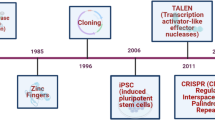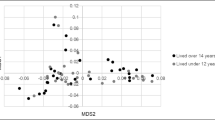Abstract
Ladybird-like genes were recently identified in mammals. The first member characterized, Lbx1, is expressed in developing skeletal muscle and the nervous system. However, little is known about the porcine Lbx1 gene. In the present study, we cloned and characterized Lbx1 from porcine muscle. RT-PCR analyses showed that Lbx1 was highly expressed in porcine skeletal muscle tissues. And we provide the first evidence that Lbx1 has a certain regulated expression pattern during the postnatal period of the porcine skeletal muscle development. Lbx1 gene expressed at higher levels in biceps femoris muscles compared with masseter, semitendinosus and longissimus dorsi muscles in Meishan pigs. Phylogenetic tree was constructed by aligning the amino acid sequences of different species. Moreover, single nucleotide polymorphism (SNP) scanning in the Lbx1 genomic fragment identified two mutations, g.752A>G and g.−1559C>G. Association analysis in our experimental pig populations showed that the mutation of g.752A>G was significantly associated with loin muscle area (P < 0.05) and internal fat rate (P < 0.05). Our results suggest that the Lbx1 gene might be a candidate gene of carcass traits and provide useful information for further studies on its roles in porcine skeletal muscle.







Similar content being viewed by others
References
Jagla K, Dolle P, Mattei MG, Jagla T, Schuhbaur B, Dretzen G, Bellard F, Bellard M (1995) Mouse lbx1 and human lbx1 define a novel mammalian homeobox gene family related to the drosophila lady bird genes. Mech Dev 53(3):345–356
Wotton KR, Weierud FK, Dietrich S, Lewis KE (2008) Comparative genomics of lbx loci reveals conservation of identical lbx ohnologs in bony vertebrates. BMC Evol Biol 8:171. doi 10.1186/1471-2148-8-171
Dietrich S, Schubert FR, Healy C, Sharpe PT, Lumsden A (1998) Specification of the hypaxial musculature. Development 125(12):2235–2249
Dietrich S, Abou-Rebyeh F, Brohmann H, Bladt F, Sonnenberg-Riethmacher E, Yamaai T, Lumsden A, Brand-Saberi B, Birchmeier C (1999) The role of sf/hgf and c-met in the development of skeletal muscle. Development 126(8):1621–1629
Valasek P, Evans DJ, Maina F, Grim M, Patel K (2005) A dual fate of the hindlimb muscle mass: cloacal/perineal musculature develops from leg muscle cells. Development 132(3):447–458. doi:10.1242/dev.01545
Brohmann H, Jagla K, Birchmeier C (2000) The role of lbx1 in migration of muscle precursor cells. Development 127(2):437–445
Gross MK, Moran-Rivard L, Velasquez T, Nakatsu MN, Jagla K, Goulding M (2000) Lbx1 is required for muscle precursor migration along a lateral pathway into the limb. Development 127(2):413–424
Mennerich D, Braun T (2001) Activation of myogenesis by the homeobox gene lbx1 requires cell proliferation. EMBO J 20(24):7174–7183
Schafer K, Neuhaus P, Kruse J, Braun T (2003) The homeobox gene lbx1 specifies a subpopulation of cardiac neural crest necessary for normal heart development. Circ Res 92(1):73–80
Qiao M, Wu HY, Li FE, Jiang SW, Xiong YZ, Deng CY (2009) Molecular characterization, expression profile and association analysis with carcass traits of porcine lcat gene. Mol Biol Reprod 37(5):2227–2234. doi:10.1007/s11033-009-9709-x
Zuo B, Xiong YZ, Deng CY, Su YH, Wang J, Lei MG, Li FE, Jiang SW, Zheng R (2005) Polymorphism, linkage mapping and expression pattern of the porcine skeletal muscle glycogen synthase (gys1) gene. Anim Genet 36(3):254–257. doi:10.1111/j.1365-2052.2005.01286.x
Xiong YZ, Deng CY (1999) Principle and method of swine testing. Chinese Agricultural Press, Beijing
Liu BH (1998) Statistical genomics: linkage, mapping and QTL analysis. CRC Press, LLC, Boca Raton, pp 404–409
An QC, Liu GY (2009) Molecular cloning, sequence identification, and tissue expression profile analysis of three novel porcine genes: Sdhb, snrpa and crybb1. Mol Biol Reprod 36(4):683–690. doi:10.1007/s11033-008-9229-0
Vasyutina E, Stebler J, Brand-Saberi B, Schulz S, Raz E, Birchmeier C (2005) Cxcr4 and gab1 cooperate to control the development of migrating muscle progenitor cells. Genes Dev 19(18):2187–2198. doi:10.1101/gad.346205
Mascarello F, Stecchini ML, Rowlerson A, Ballocchi E (1992) Tertiary myotubes in postnatal growing pig muscle detected by their myosin isoform composition. J Anim Sci 70(6):1806–1813
Mesires NT, Doumit ME (2002) Satellite cell proliferation and differentiation during postnatal growth of porcine skeletal muscle. Am J Physiol Cell Physiol 282(4):C899–C906. doi:10.1152/ajpcell.00341.2001
Tamaki T, Akatsuka A, Ando K, Nakamura Y, Matsuzawa H, Hotta T, Roy RR, Edgerton VR (2002) Identification of myogenic-endothelial progenitor cells in the interstitial spaces of skeletal muscle. J Cell Biol 157(4):571–577. doi:10.1083/jcb.200112106
Watanabe S, Kondo S, Hayasaka M, Hanaoka K (2007) Functional analysis of homeodomain-containing transcription factor lbx1 in satellite cells of mouse skeletal muscle. J Cell Sci 120(23):4178–4187. doi:10.1242/Jcs.011668
Nii M, Hayashi T, Mikawa S, Tani F, Niki A, Mori N, Uchida Y, Fujishima-Kanaya N, Komatsu M, Awata T (2005) Quantitative trait loci mapping for meat quality and muscle fiber traits in a Japanese wild boar × large white intercross. J Anim Sci 83(2):308–315
Karlsson AH, Klont RE, Fernandez X (1999) Skeletal muscle fibres as factors for pork quality. Livest Prod Sci 60(2–3):255–269
Nii M, Hayashi T, Tani F, Niki A, Mori N, Fujishima-Kanaya N, Komatsu M, Aikawa K, Awata T, Mikawa S (2006) Quantitative trait loci mapping for fatty acid composition traits in perirenal and back fat using a Japanese wild boar × large white intercross. Anim Genet 37(4):342–347. doi:10.1111/j.1365-2052.2006.01485.x
Wimmers K, Murani E, Ngu NT, Schellander K, Ponsuksili S (2007) Structural and functional genomics to elucidate the genetic background of microstructural and biophysical muscle properties in the pig. J Anim Breed Genet 124:27–34
Acknowledgments
This study was supported financially by the National “863” project of P. R. China (2007AA10Z166), National High Technology Development Project (2006BAD01A08-01), and Hubei Province Key Project of Science and Technology (2006AA202A01).
Author information
Authors and Affiliations
Corresponding author
Rights and permissions
About this article
Cite this article
Chao, Z., Wu, J., Zheng, R. et al. Molecular characterization and expression patterns of Lbx1 in porcine skeletal muscle. Mol Biol Rep 38, 3983–3991 (2011). https://doi.org/10.1007/s11033-010-0516-1
Received:
Accepted:
Published:
Issue Date:
DOI: https://doi.org/10.1007/s11033-010-0516-1




